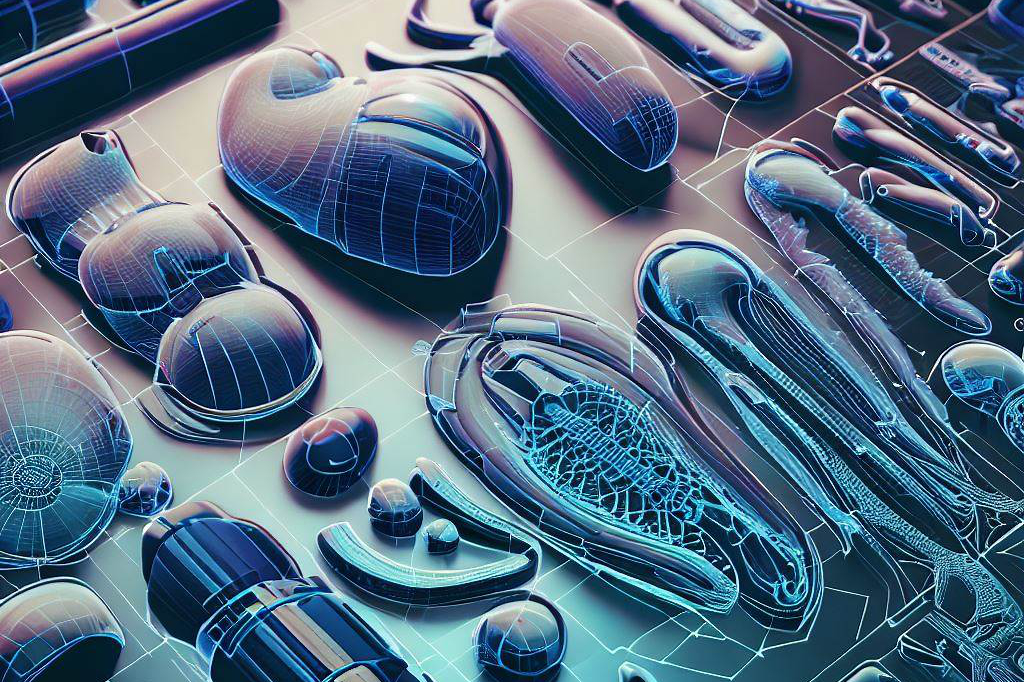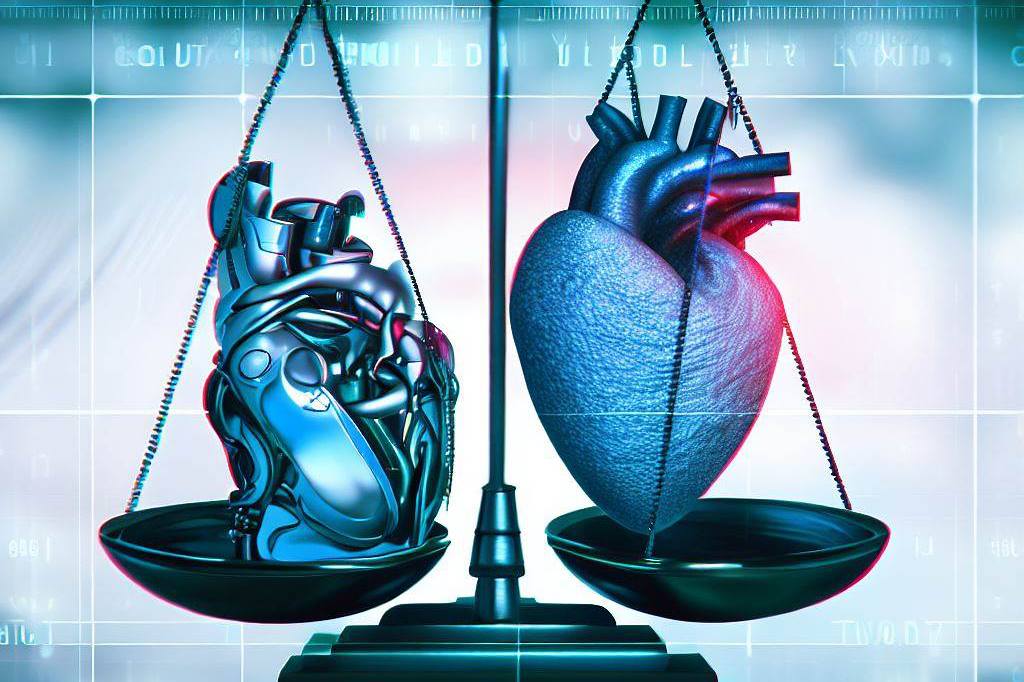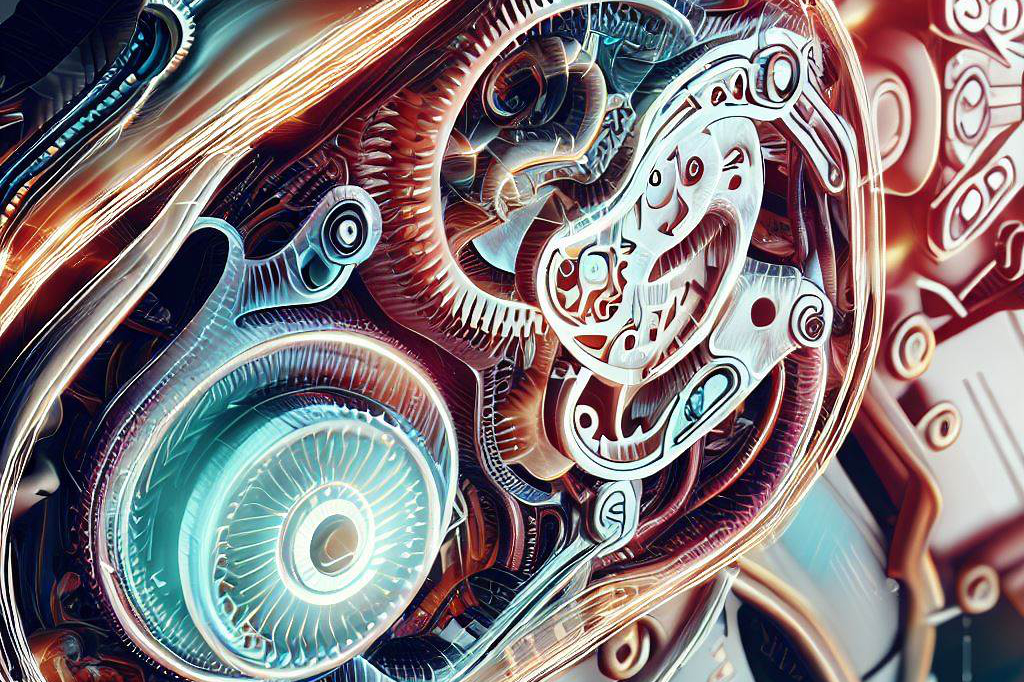Introducing the Possibility of Artificial Organs for Human Enhancement
Imagine a world where people are no longer limited by their physical abilities or medical conditions. A world where people can enhance their bodies beyond the limitations set by nature. The integration of artificial organs into the human body has the potential to make this a reality.
Artificial organs have been used in medicine for decades to replace damaged or diseased organs, but they have typically been used as a last resort when no other options are available. However, with advancements in technology, artificial organs have become more sophisticated and reliable, opening up new possibilities for their use.
The idea of integrating artificial organs into the human body for enhancement purposes may sound like science fiction, but it is already being explored by researchers and scientists around the world. The potential benefits are immense – from improving quality of life for those with organ failure or disease to enhancing human abilities beyond their natural limitations.
It’s important to note that this is not a new concept – prosthetics have been used for centuries to replace limbs lost through injury or illness. However, the idea of integrating technology into our bodies raises ethical questions about what it means to be human and what “natural” really means in a rapidly advancing technological world.
In this article, we’ll explore the current use of artificial organs in medicine and delve deeper into how their integration could change our lives forever. We’ll also discuss some ethical considerations that need to be taken into account when considering this technology and look at some exciting developments happening right now in this field.
Artificial Organs 101: Types and Functions

Overview of the different types of artificial organs (heart, kidney, liver, etc.)
Artificial organs are devices that are engineered to replace or enhance the function of a natural organ in the body. There are several different types of artificial organs that have been developed to date, each designed to serve a specific purpose.
Some of the most common types include the heart, kidney, liver, lungs, and pancreas.
The artificial heart is one of the most well-known artificial organs due to its life-saving potential for those suffering from severe heart conditions.
The device pumps blood throughout the body like a natural heart would, typically through an external power source.
Artificial kidneys are another common type that can perform filtration duties when damaged or diseased natural kidneys can’t.
Liver and lung replacements help individuals with organ failure sustain life while waiting for donor transplants.
Each type has its own unique design features and functions tailored specifically for each organ’s role in human physiology.
Explanation of how each organ functions and its purpose in the body
The human body is composed of many vital organs that perform specific functions essential for survival.
Artificial organs aim to mimic these natural processes as closely as possible so that patients can regain some degree of normal functioning after damage or disease has taken place.
For example, a healthy heart pumps blood throughout our bodies by contracting rhythmically at regular intervals. When someone suffers from cardiovascular disease or other conditions affecting their heart function- these artificial devices act as replacements so they can better fight off infections or lead their daily lives without impairment.
Similarly, kidneys filter waste products from our bloodstreams, which helps regulate electrolyte levels- Key functions that keep us healthy overall. However, when kidney failure occurs due to disease or injury – artificial kidneys take over this job through various methods, including dialysis machines, which simulate this same process.
The purpose of an artificial organ is to replace or improve the natural function of a damaged or diseased organ in the body with a device that can perform similar functions. This helps restore a patient’s health and quality of life, improving their overall wellbeing.
The Benefits of Artificial Organs Integration

Improved Quality of Life for Those with Organ Failure or Disease
Artificial organs have already made a significant impact on the medical field, providing lifesaving solutions for patients with organ failure or disease.
Patients who receive artificial organs can experience a greatly improved quality of life, with restored bodily functions and the ability to resume their daily activities without limitations.
For example, a patient who receives an artificial heart can have a new lease on life, no longer restricted by their heart’s inability to pump properly.
Similarly, someone who receives an artificial kidney can continue to live without requiring dialysis treatments multiple times per week.
The integration of artificial organs into the human body has already proven to be a successful method of improving and extending the lives of those with organ failure or disease.
Potential to Enhance Human Abilities Beyond Natural Limitations
While artificial organs are currently used mainly as replacements for damaged or malfunctioning natural organs, there is potential for them to be used as enhancements that go beyond what is naturally possible.
Imagine a future where someone could receive an artificial eye that allows them to see farther and clearer than any natural eye ever could.
Or what about an artificial limb that not only replaces a lost limb but also grants superhuman strength or agility?
The possibilities are endless and may seem like something out of science fiction, but technology is rapidly advancing in this area. While there are certainly ethical considerations that must be addressed before such enhancements become commonplace, it’s exciting to think about the potential possibilities that lie ahead.
Integrating artificial organs into the human body has enormous potential benefits, ranging from restoring normal bodily functions in those with organ failure or disease to enhancing human abilities beyond their natural limitations. As technology continues to advance in this area, we can expect even more exciting developments in the future.
Ethical Considerations

The Dilemma of Human Enhancement
The concept of human enhancement raises ethical questions about the line between treating illness and enhancing natural abilities.
While using artificial organs to compensate for organ failure or disease is widely accepted, some people question whether it is ethical to enhance human abilities beyond their natural limitations. The idea of creating “superhumans” through artificial organs raises concerns that it could create an unfair advantage between those who can afford the technology and those who cannot.
Safety Concerns and Regulations
The integration of artificial organs into the human body also raises safety concerns. Any medical procedure comes with risks, but adding technology into the mix adds another layer of potential complications.
Additionally, ensuring that these technologies are safe and effective requires extensive testing and regulations to be put in place. Despite progress being made in this area, it remains a challenge to balance innovation with safety.
Accessibility and Affordability
Another concern surrounding the integration of artificial organs is accessibility and affordability. This technology has the potential to greatly benefit those suffering from organ failure or disease, but may not be accessible to everyone due to financial limitations or a lack of availability in certain areas.
While research continues into increasing accessibility, there are still barriers that need addressing before it can become a widely available option for everyone who needs it.
Current Developments and Future Possibilities
The Current State of Artificial Organs
Artificial organs have come a long way since the first successful heart transplant in 1967.
Today, there are a number of artificial organs on the market that have dramatically improved the quality of life for those with organ failure or disease.
For example, kidney dialysis machines allow patients with kidney failure to live relatively normal lives.
Similarly, left ventricular assist devices (LVADs) can help people with heart failure maintain their health while they wait for a transplant.
Researchers are continuing to develop new types of artificial organs and improve existing ones.
One exciting area of research is 3D printing, which has the potential to create customized artificial organs using a patient’s own cells. Scientists are also exploring ways to integrate electronic sensors into artificial organs, which would allow doctors to monitor their functioning and adjust treatment as needed.
Brain-Computer Interfaces
One futuristic possibility for integrating artificial organs into the human body is through brain-computer interfaces (BCIs). BCIs are devices that allow people to control computers or other devices using their thoughts.
In theory, BCIs could be used to control prosthetic limbs or even entire bodies made up of robotic parts. The development of BCIs is still in its early stages, but researchers have already made significant progress.
In 2016, scientists at Ohio State University implanted a chip into an injured man’s brain that allowed him to regain some movement in his hand. While the technology is not yet precise enough for widespread use, it holds enormous potential for enhancing human abilities beyond their natural limitations.
Cyborg-Like Enhancements
Another possibility for integrating artificial organs into the human body is through cyborg-like enhancements. Cyborgs are fictional characters with both biological and technological components in their bodies – think Darth Vader or the Borg from Star Trek. While cyborgs may seem like a far-off concept, researchers are already exploring ways to enhance human abilities with technology.
For example, scientists at MIT have developed a device that can boost a person’s ability to learn new skills. The device uses electrical stimulation to activate certain areas of the brain associated with learning.
In theory, similar devices could be used to enhance other human abilities, such as strength or stamina. The possibilities for integrating artificial organs into the human body are truly exciting.
While there are still many challenges to overcome, researchers are making significant progress in this field every day. Who knows – one day we may all be cyborgs!
Small Details You Might Not Know About Artificial Organs

The Materials Used in Artificial Organs
Have you ever wondered what materials are used to create artificial organs? The answer may surprise you.
While some artificial organs are made from synthetic materials, others are actually made from animal tissues. For example, heart valves can be created using pig or cow tissue.
These tissues are processed to remove any foreign cells and then fashioned into a valve that can replace a damaged or diseased one.
Additionally, 3D printing technology is being used more frequently to create artificial organs.
This allows for greater customization and precision in designing the organ’s shape and function. In some cases, stem cells taken from the patient’s own body can be used to create the artificial organ, reducing the risk of rejection.
Maintenance Requirements for Artificial Organs
Just like natural human organs require care and maintenance, so do artificial ones. Patients with artificial organs must undergo regular check-ups with their doctors to ensure that the organ is functioning properly and that there are no signs of complications or rejection.
In addition to regular check-ups, patients must also take medications such as immunosuppressants to prevent their body from rejecting the foreign object. This medication can have side effects and require careful monitoring by medical professionals.
Compatibility with Other Medical Technologies
Artificial organs must be compatible with other medical technologies in order for them to function properly within the human body. For example, an individual who has an implanted pacemaker must make sure that their artificial heart is compatible with it so that both devices can work together without causing interference or complications. This compatibility requirement extends beyond just medical technologies; it also applies to lifestyle choices such as diet and exercise.
Patients with artificial organs may need to make adjustments in their daily routines in order to protect their implant and ensure its longevity. While artificial organs may seem like a futuristic solution to medical problems, they require careful consideration and management.
From the materials used to create them to their compatibility with other technologies, these implants are complex and require specialized care. However, the benefits of artificial organs in enhancing human abilities and improving quality of life make it an exciting field worth exploring further.
Final Thoughts

It’s clear that integrating artificial organs into society has enormous potential for improving our quality of life while also pushing the boundaries of what it means to be human. While there are certainly ethical considerations that need to be taken into account as this technology continues to develop, we believe that these issues can be addressed through careful regulation and investment in research. Above all else, though, we’re excited by the prospect of a future where everyone has access to technology that can improve their health and wellbeing – regardless of socioeconomic status or geographic location.
We envision a world where artificial organs are seen not as a luxury, but as a basic human right. And we’re confident that with continued investment and innovation, we can make this future a reality.

C M, a seasoned editor, journalist, and consultant, is deeply fascinated by the convergence of technology, space, and the future of humanity.
With a particular interest in transhumanism, futurology, and the philosophical and ethical dimensions of these domains, C M serves as the lead contributor to TranscendSphere and SpaceSpotlight.
When not penning insightful articles on these rapidly evolving fields, C M indulges in their love for podcasts and books, proudly embracing their status as a ‘Happy Nerd Extraordinaire!’





